In sport it’s well-known that top rivals raise each other’s performances to new heights. The 1990s brought us Agassi v. Sampras, Holyfield v. Tyson, and in endurance motorsport McLaren v. Porsche. In the run-up to this epic rivalry, Porsche had it mostly their own way. When Porsche began to enter the top prototype classes in the early 1970s, Ferrari abandoned sports racing entirely and while other manufacturers had spurts of success, they were short-lived.
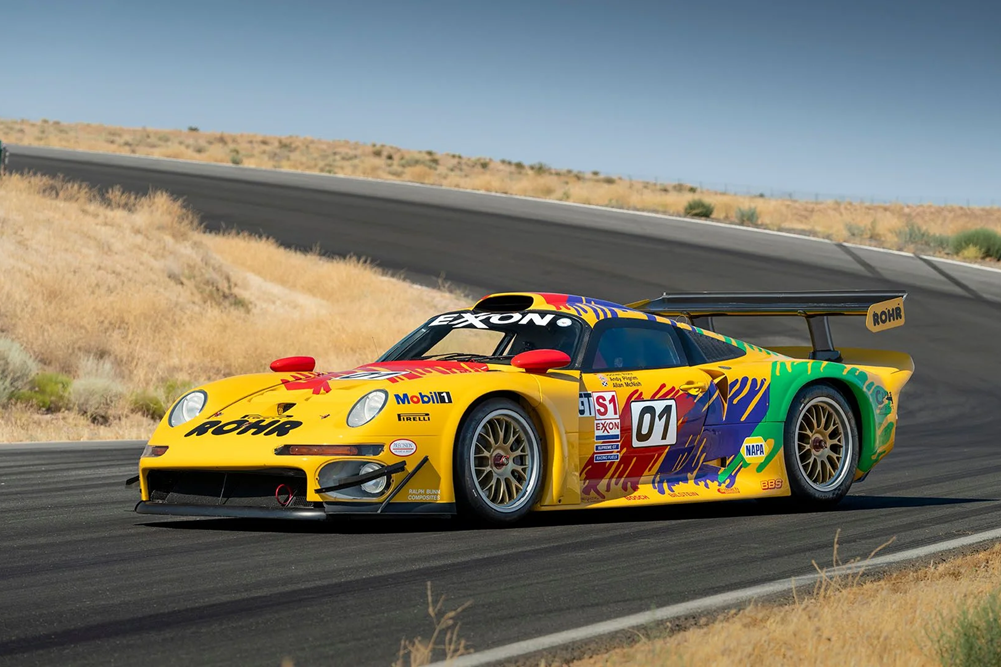
In fact, such was the dominance of Porsche’s Group C 956/962s in the 1980s and early 1990s that Norbert Singer and Porsche’s Weissach engineers nearly caused the total collapse of multiple international race series. From the ashes of these endurance racing championships rose the BPR Global GT Series in 1994.
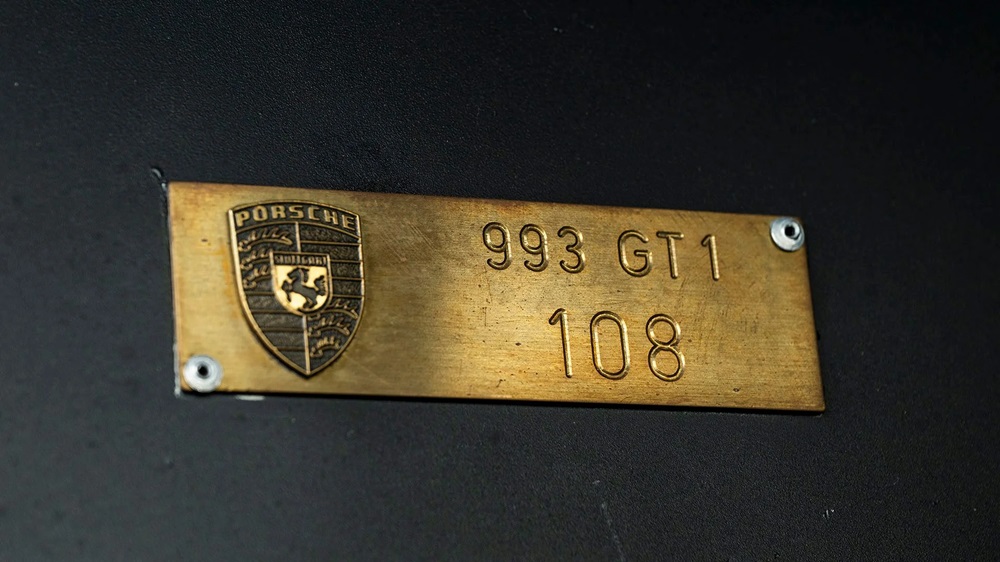 BPR rules required production sportscars which were modified into racing cars, initially attracting a slew of privateer entries running 911-based Turbo S and RSRs, Venturi LMs, Ferrari F40s, and even Callaway Corvettes, creating a professional yet club-like atmosphere. The popular new series’ debut year was the spark for Gordon Murray and McLaren to get involved with their F1, eventually, with much prodding, producing nine F1 GTRs for 1995. While Porsche had been busy with their new GT2 and GT2 Evo the F1s took the first six races on the trot, 10 of the 12, and the BPR season championship. For good measure they won the 1995 24 Hours of Le Mans as well. Porsche began the season believing they had an ace up their sleeve in other race series with the TWR-Porsche WSC95 open-cockpit Spyder, yet this was effectively banned by IMSA before turning a wheel at Daytona and Sebring. Porsche’s customers, used to running at the front and winning, made sure that Weissach got the message. Herbert Ampferer, Porsche’s Competition Director knew change was needed; “Hardly a soul felt we could go on like this for another year.” In the summer of 1995 Porsche elected to create a mid-engined GT1 class car based on the 993-generation 911. Ampferer said, “there were no doubts that we should design the GT1… It was more difficult in engineering terms, but we’ve managed it, and we believe we have a car which will beat the McLarens.”
BPR rules required production sportscars which were modified into racing cars, initially attracting a slew of privateer entries running 911-based Turbo S and RSRs, Venturi LMs, Ferrari F40s, and even Callaway Corvettes, creating a professional yet club-like atmosphere. The popular new series’ debut year was the spark for Gordon Murray and McLaren to get involved with their F1, eventually, with much prodding, producing nine F1 GTRs for 1995. While Porsche had been busy with their new GT2 and GT2 Evo the F1s took the first six races on the trot, 10 of the 12, and the BPR season championship. For good measure they won the 1995 24 Hours of Le Mans as well. Porsche began the season believing they had an ace up their sleeve in other race series with the TWR-Porsche WSC95 open-cockpit Spyder, yet this was effectively banned by IMSA before turning a wheel at Daytona and Sebring. Porsche’s customers, used to running at the front and winning, made sure that Weissach got the message. Herbert Ampferer, Porsche’s Competition Director knew change was needed; “Hardly a soul felt we could go on like this for another year.” In the summer of 1995 Porsche elected to create a mid-engined GT1 class car based on the 993-generation 911. Ampferer said, “there were no doubts that we should design the GT1… It was more difficult in engineering terms, but we’ve managed it, and we believe we have a car which will beat the McLarens.”
What his team had designed and engineered was unlike anything that Porsche had created before. The Porsche 911’s center monocoque section was retained, including the steel floor, bulkhead, dashboard, and front trunk section with the 911’s stock suspension mounting points. Upon project approval it was deemed that the new car “must be identifiable as a 911” and thanks to cohesive styling from Tony Hatter – also the designer of 993-generation road cars – it appeared very 911-like, albeit longer, wider, and lower with its raked Speedster windshield. The wheelbase increased 230 mm to accommodate the mid-engine design with chassis engineer Horst Reitter given relative freedom to design a five-link rear suspension with wide lower wishbones. The new GT1/96 was fitted with a direct development of the virtually new engine that powered Dauer Porsche 962 LM GT to Le Mans victory in 1994, now completely water-cooled. This Type M96/80 engine was 3.2-liters in displacement and twin-turbocharged, featuring four-valve heads, and chain-driven camshafts, producing 600 horsepower fed through a six-speed gearbox to the rear wheels.
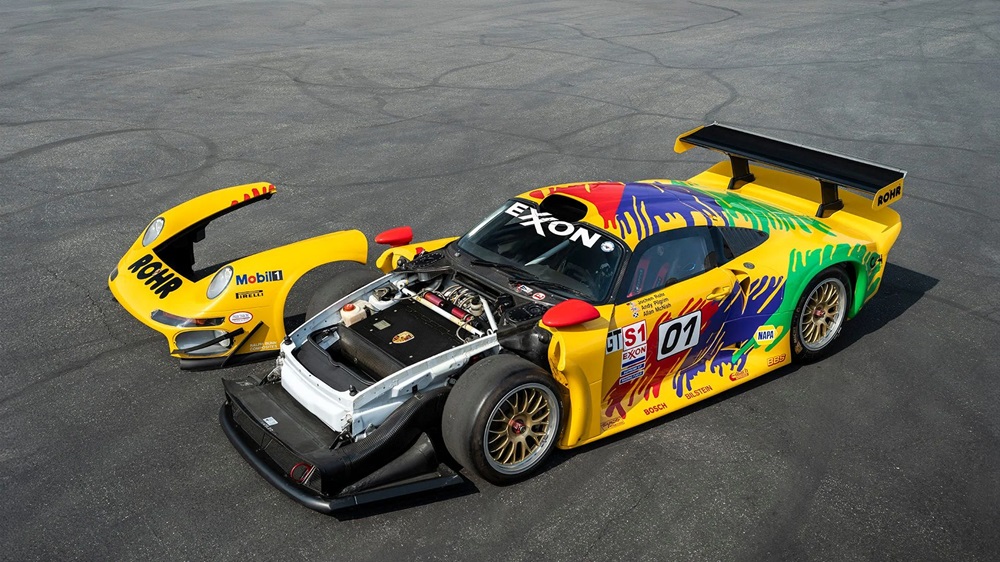
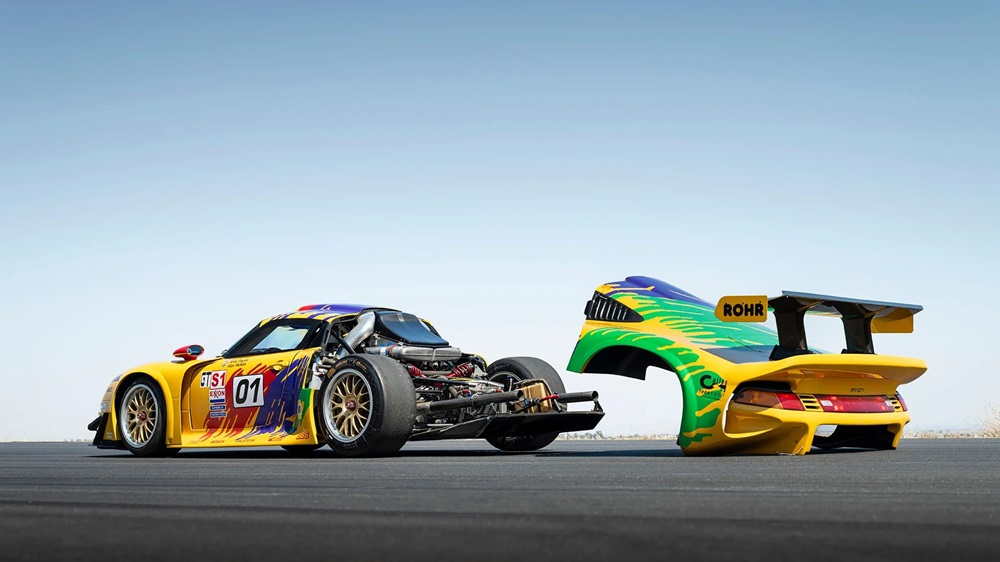
Weissach race department employees hunkered down for the winter to prepare not only a racing prototype but the homologated Strassenversion (road version) as well, which received type approval on the 24 April 1996. Of course, preparation of the factory team’s two-car entry at Le Mans was the true aim and to that effect Porsche spent all spring testing the GT1/96, racking up thousands of shake down miles. In short, Porsche’s 1996 24 of Le Mans was a victorious affair following 1995’s utter disappointment. The factory’s GT1s finished first and second overall in the GT1 class with the Joest-Porsche WSC95 taking overall honors – a complete Porsche podium sweep. After finishing the BPR season winning all three races they entered, Porsche began producing customer GT1s for the privateers that so yearned to join the Porsche factory team in defeating the armada of McLaren F1s in 1997. After an inspection and FIA approval of the first customer GT1/96s on 18 February 1997, Porsche Motorsport organized a two-day handover of the first customer GT1s at Mugello Circuit in mid-March. Among those teams on-hand was Leverkusen, Germany-based Roock Racing.
Order and purchase paperwork on file between Porsche Motorsport and Bernd Schiller/ CCEL Columbus representing Roock Racing offer a glimpse of the ordering process. A Rennfahrzeug-Bestellung (Racing Vehicle Order) was drafted on 17 December 1996 reveals that Roock Racing committed to purchasing a 911 GT1 Rennversion built to 1997 BPR specifications in Glacier White for DM 1,759,000 or approximately $1,075,000 at the time. A letter from Porsche to Schiller remains on file requesting final payment after a DM 500,000 deposit with delivery slated for 5 March 1997. The Porsche Motorsport Collection Certificate shows an amended delivery date of 10 March 1997, and now complete, it records the production number (993 108), chassis number (WP0ZZZ99ZVS396106), and engine and transmission serial numbers.
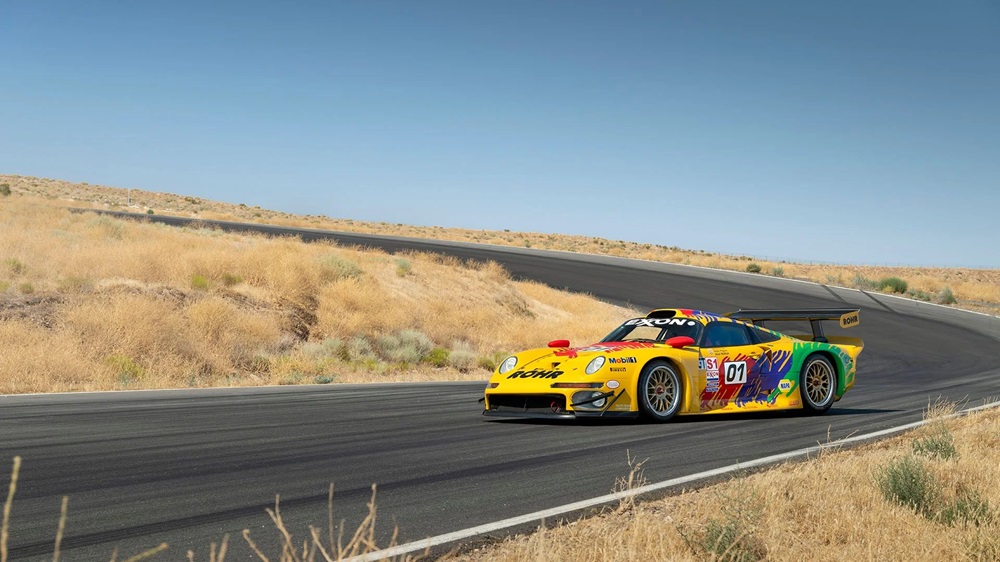
Roock wasted no time building a team around the car. The team enlisted regular Roock 911 GT2 driver Ralf Kelleners and newcomer Yannick Dalmas. Dalmas not only provided experience driving the factory’s own 911 GT1/96 throughout the 1996 season but was also part of the winning McLaren F1 team at the 1995 24 Hours of Le Mans. Throughout the course of the first half of the season (now known as the FIA GT Championship), number 108 wore start number 16 and a silver and blue livery with sponsorship from Nikko and VOX. The Roock GT1 finished the first race of the season, a four-hour affair at Hockenheim in an impressive 5th place, fastest of the five privateer 911 GT1s after an FIA mandated 10-mm intake restrictor was fitted robbing all GT1s of 60 horsepower. After a successfully handled Le Mans Prequalifying session held on 4 May with Allan McNish and Stéphane Ortelli at the wheel, the car recorded a DNF due to an off in the heavy rain-shortened 4 Hours of Silverstone. Number 108 bounced back quickly at the 3 Hours of Helsinki, a new event on the race calendar. At this event the FIA finally allowed the GT1 teams to remove their air restrictors and around the tight, bumpy street circuit and, as a result, Ralf Kelleners and 1998 Le Mans winner Stéphane Ortelli finished on the podium in 2nd place – Porsche’s best result so far that season!
After Helsinki all eyes turned towards the world’s most important endurance race, the 65th running of the 24 Hours of Le Mans. Only the best needed to apply for Le Mans in 1997 as 19 teams were eliminated during May’s prequalifying, and of the 52 that progressed through, only 48 could be placed on the grid. For the race Kelleners had been drafted into the factory squad’s GT1 Evo, and Allan McNish and former F1 star Karl Wendlinger were selected to create the three-driver team along with Ortelli. After qualifying 11th, the Roock team had high hopes for their GT1 entry, however on the 8th lap number 108 suffered an unfortunate DNF with three-times Le Mans-winner McNish at the wheel due to a front shock absorber failure. After Le Mans, Roock would sell 108 to the U.S.-based Rohr Racing team.
 Upon acquisition by Jochen Rohr’s eponymous team, 993 GT1 108 became the first 911 GT1 to race in the U.S. The West Chester, Ohio-based racing outfit was in ascendance through the mid-1990s with championships in SCCA World Challenge and IMSA, all with Porsche race cars. The 911 GT1 arrived at the right time for Rohr who had contested the first half of the season with Englishman Andy Pilgrim in their 911 GT2 Evo. What followed over the final races of the IMSA GT Championship was nothing short of astonishing. Now finished in the unmistakable yellow Rohr livery (aided by some additional color courtesy of Rohr’s daughter) number 108 captured two pole positions and four victories in a row at Mosport, Las Vegas, Pikes Peak International, and Sebring. With McNish reunited with Le Mans entry and Andy Pilgrim graduating from GT2 the pair, along with Dorsey Schroeder, the Rohr Racing GT1 captured the GTS-1 class championship commemorated by Rohr Racing on a stunning championship poster.
Upon acquisition by Jochen Rohr’s eponymous team, 993 GT1 108 became the first 911 GT1 to race in the U.S. The West Chester, Ohio-based racing outfit was in ascendance through the mid-1990s with championships in SCCA World Challenge and IMSA, all with Porsche race cars. The 911 GT1 arrived at the right time for Rohr who had contested the first half of the season with Englishman Andy Pilgrim in their 911 GT2 Evo. What followed over the final races of the IMSA GT Championship was nothing short of astonishing. Now finished in the unmistakable yellow Rohr livery (aided by some additional color courtesy of Rohr’s daughter) number 108 captured two pole positions and four victories in a row at Mosport, Las Vegas, Pikes Peak International, and Sebring. With McNish reunited with Le Mans entry and Andy Pilgrim graduating from GT2 the pair, along with Dorsey Schroeder, the Rohr Racing GT1 captured the GTS-1 class championship commemorated by Rohr Racing on a stunning championship poster.
In 1998 the car was sold to Reiser Callas Rennsport. With Reiser behind the wheel it contested the latter half of the Canada GT Challenge Cup season beginning with round 7 of 11. Over the season’s final five races, Reiser, teamed with Tony Callas as Reiser Callas Rennsport, finished fifth twice as their best results. It is noted that while Reiser entered a 1999 GT Challenge Cup race he did not attend and that by January 2001 the car was now in the hands of Larry Schumacher and Schumacher Racing. That year Schumacher, Martin Snow, and Gunnar Jeanette piloted number 108 over four Grand-Am races as start number 99 in a white and blue livery. A best finish of second overall and first in GTS class at Lime Rock was a bright spot for Schumacher Racing, and with a 9th place finish at the 350-mile race at Mid-Ohio in 2001, the culmination of its competitive racing career. It must be said that after numerous races fielded by capable racing teams, number 108 was never severely damaged or dismantled as it followed a new path toward becoming a cherished and highly collectible racing Porsche.
It is believed that the car was purchased directly from Schumacher Racing by Matt Drendel of Hickory, North Carolina. At the time, Drendel was in the process of acquiring the finest turbocharged Porsche racing cars for a highly curated collection. At its height it included a 1973 917/30 004, 1976 935 001, 1974 911 Carrera RSR 2.1 Turbo, a McLaren MP4/2 TAG Turbo Formula One car, and of course 993 GT1 108 among others. While with Drendel, photo evidence on file shows that the car had been returned to Rohr yellow but without the colorful racing graphics and sponsor logos just as it was for a short time in 1997. Before his untimely passing in 2010, it is believed the car was sold through Kerry Morse, the highly knowledgeable Porsche race car aficionado who assisted Drendel in replacing 108 with a factory-run 911 GT1 Evo. In 2012, the consignor acquired 993 108, just its second private owner since it left Porsche’s Weissach workshops in 1997.
While under the care of the consignor, the car once again received its unmistakable Rohr Racing livery with graphical touches, sponsor logos, and IMSA start number 01. It made appearances at Porsche Rennsport Reunion V and VI at Laguna Seca in these colors and today appears just as McNish and Pilgram raced it in the second half of the 1997 IMSA season, the most successful period of its race career. In May of 2016 Jochen Rohr, Andy Pilgrim, and Tony Callas were reunited with number 108 at a PCA TechEd session where the three swapped stories about their time spent racing in the GT1 placed in front a captive crowd. Most recently, number 993 108 has been under the care of Joey Seely at E-Motion Engineering. The GT1 has not been sitting idle as a static display piece; in fact, it is a regular visitor to Auto Club Speedway and regularly exercised even as its status as a collectible Porsche remains at an all-time high.
The 993-generation 911 GT1 marks an inflection point between cars that can be run by a knowledgeable privateer and the later mid-2000s LMP2 class RS Spyder that requires further resources and support. Offered for public sale for the first time, this exceptional 911 GT1 – never upgraded to 996-style Evo specification – is supplied with a comprehensive digital history file of purchase documentation, historical race photography, records, a spare rear wing element, and four spare BBS wheels. Additionally, the car is eligible for historic racing events such as Le Mans Classic, HSR’s Classic 12 Hour at Sebring and Classic Daytona 24 Hour along with Porsche Rennsport Reunion 8 and all manner of prestigious concours events. Well-maintained and offered from a world-class Porsche collection, uncommon is the opportunity to acquire a special race-winning 993 GT1, especially one in a famous livery raced in period by the best.

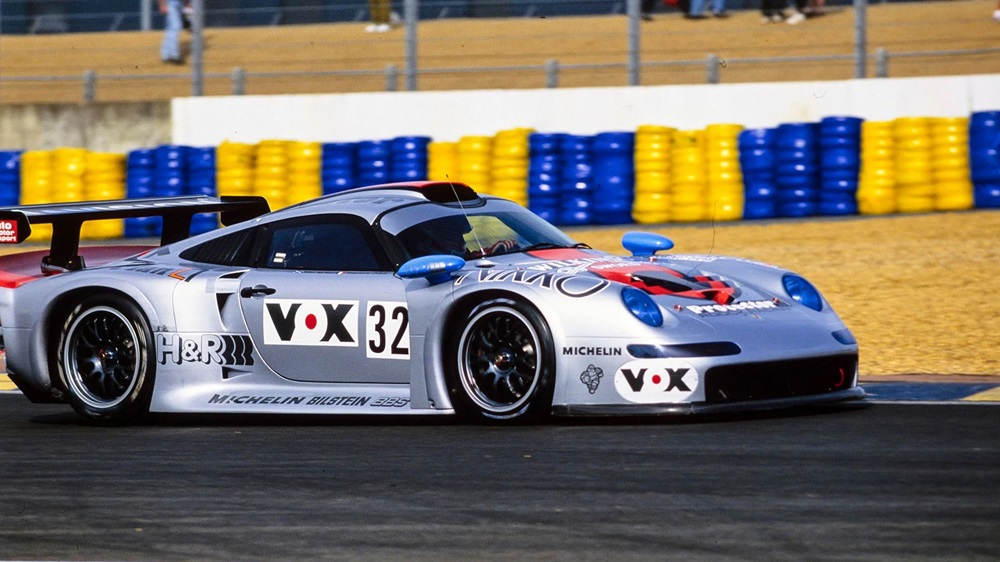
find more news here…










